Many people visit the Great Smoky Mountains National Park looking for beautiful hikes, black bears, elk in rut, camping in the Smokies, or glorious fall colors in October. What most people don’t know is that there are a staggering 1,600 species of flowering plants found in the park. The diversity of wildflowers in the Great Smoky Mountains National Park is so impressive that no other US National Park can quite compare.
From early spring to late fall, the flower show never seems to end.
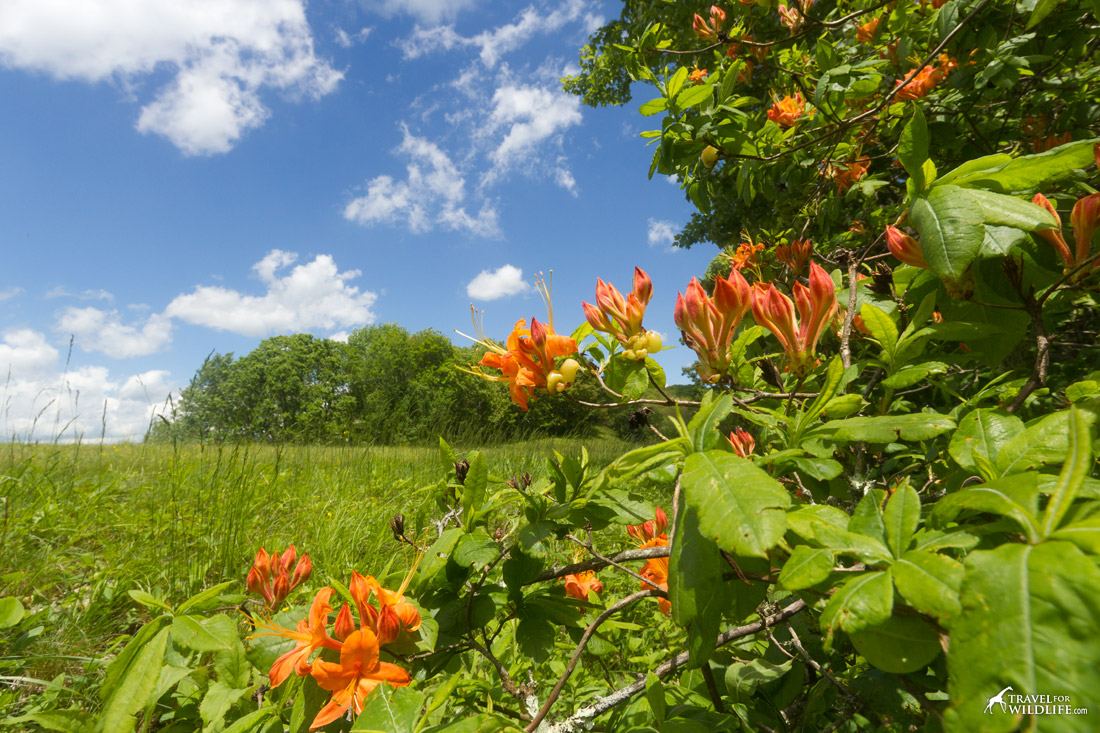
*This article may contain affiliate links. We receive a small commission at no extra cost to you.*
Why are there so many wildflowers in the Great Smoky Mountains National Park?
There are many reasons for this incredible plant diversity: geography, habitat diversity, geological history, conservation, and climate change.
The Great Smoky Mountains National Park is shared between North Carolina and Tennessee (roughly half of the park is in each state). This area, the Southern Appalachians, is one of the temperate zone’s hot spots for plants. Long term climate changes have been a great contributor to the plant diversity found in the Smoky Mountains. During the last Ice Age, while many plant species died out due to expanding ice cover, this wasn’t the case for many peaks of the Southern Appalachians. The reason is that the glacial ice did not cover these peaks and some plant species survived as though they were on little islands. In fact, some of the species found at higher elevations today have been here for many tens of thousands of years. Think about this when you are hiking in the park. Just incredible.
The change in elevation within the park is another factor contributing to the great plant diversity found within the Smoky Mountains. From 850 feet to 6,643 at its highest point on Clingman’s Dome, the different climates found at different heights, combined with the many different topographical features, have helped create the perfect habitats for such a wide range of plants.
As an example, you can find about 30 species of native orchids, and ten species of trillium within the park. How about that?
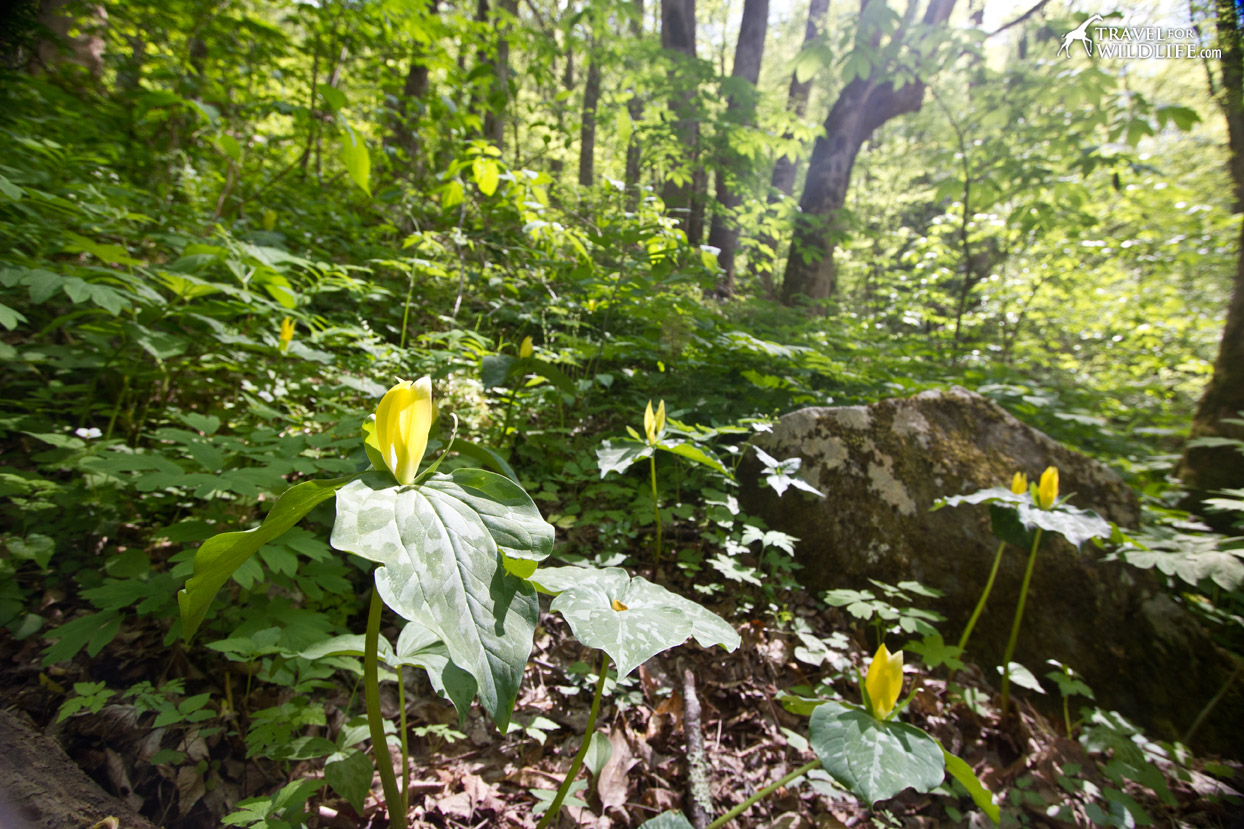
We’ve lived near the park for seven years now and we’d never taken a wildflower hike in the smokies in April, we are always too busy trying to find the red squirrels or the bears. So last spring we decided to take a day off, visit the park, and go on our very own Smoky Mountain wildflower pilgrimage. We took our flower guide Wildflowers of the Smokies and managed to do two out of the three walks we wanted to do. We walked the Oconaluftee River trail and the Cove Hardwood Nature Trail. We moved a lot slower than we thought we would because every two feet there were so many incredible wildflowers to see!
Oconaluftee River Trail
This trail runs from the Oconaluftee Visitor Center to the town of Cherokee. It is very easy, accessible by wheelchair, and the river views are beautiful. It took us a few hours to do this trail as we were stopping every minute and taking thousands of photos along the way.

Here are some of the wildflowers we saw during our wildflower pilgrimage at the Oconaluftee River Trail:
Fringed Phacelia
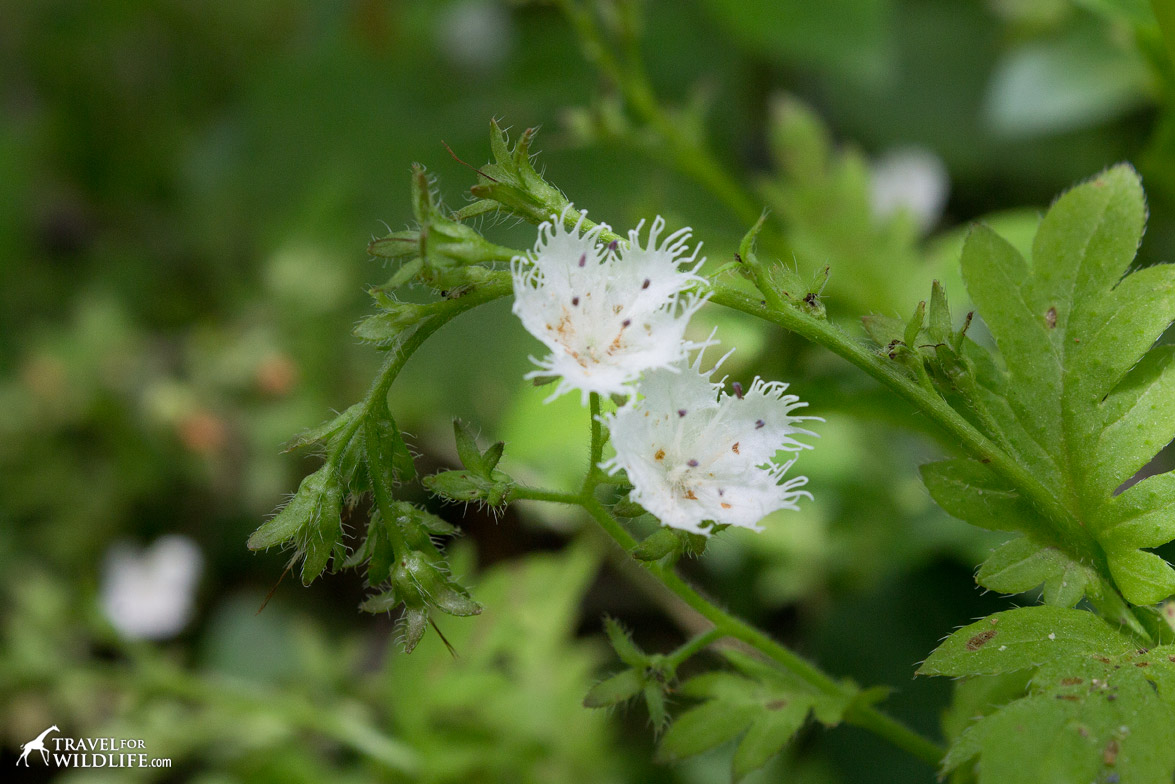
The Fringed phacelia is the only phacelia in the park that has fringes (hence its name!), and it is recognizable by its ephemeral small flowers shaped like a cup. When densely packed, it gives the impression you are in front of a snow filled field!
Purple Phacelia
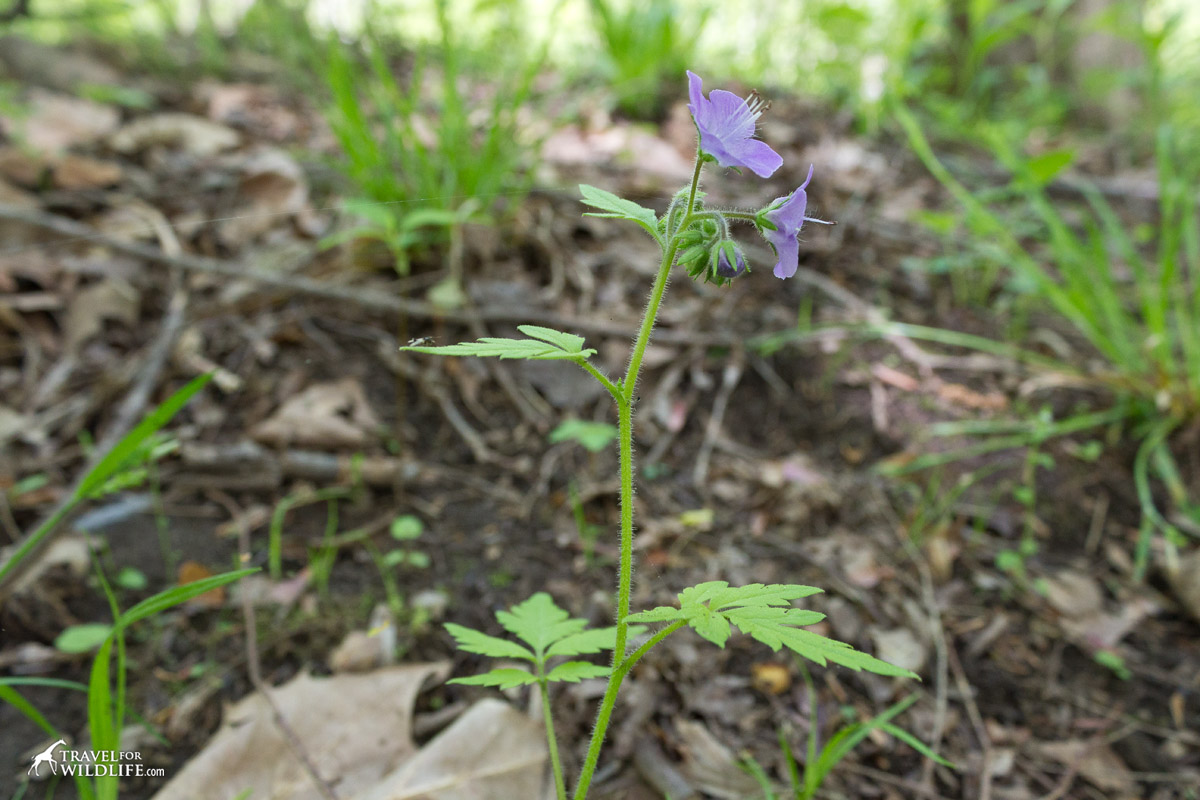
Growing 1-2 feet tall, the Purple phacelia is the tallest of the phacelias that are found in the Great Smoky Mountain National Park.
Solomon’s Seal
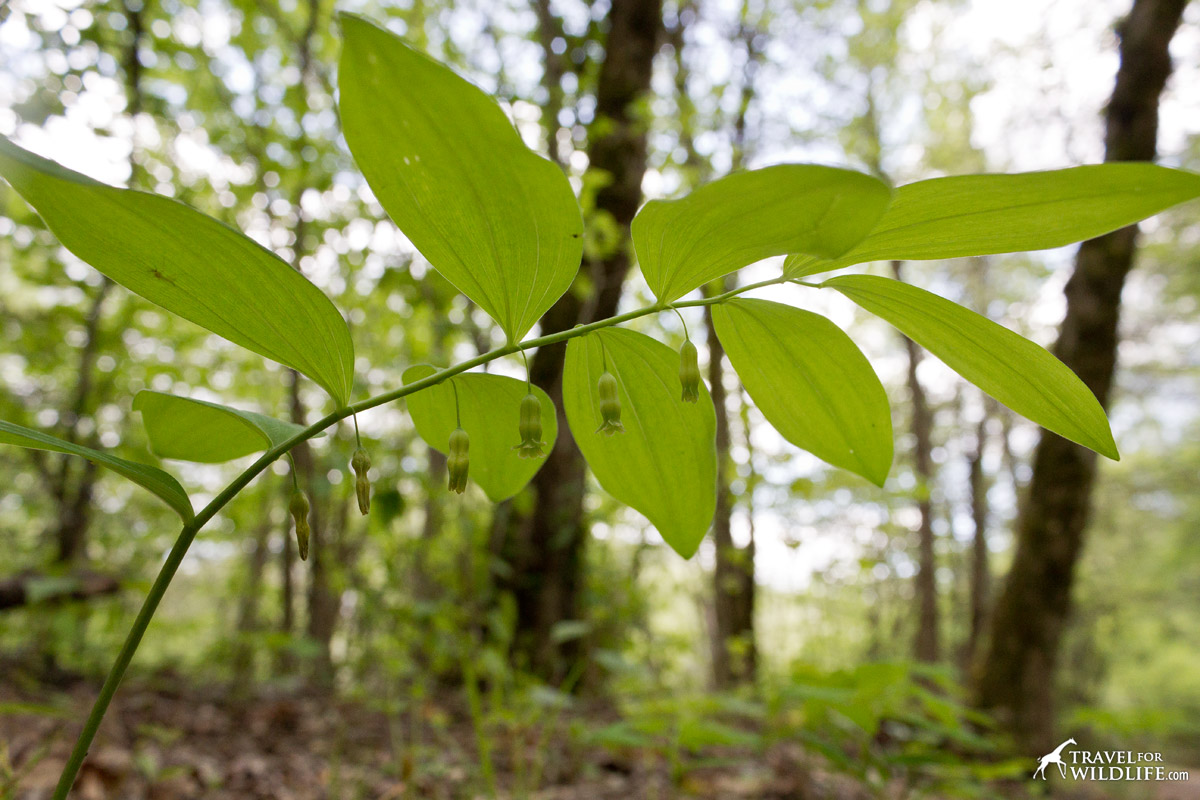
The Solomon’s Seal main characteristic is its dainty white tubular flowers that hang underneath its leaves.
False Solomon’s Seal
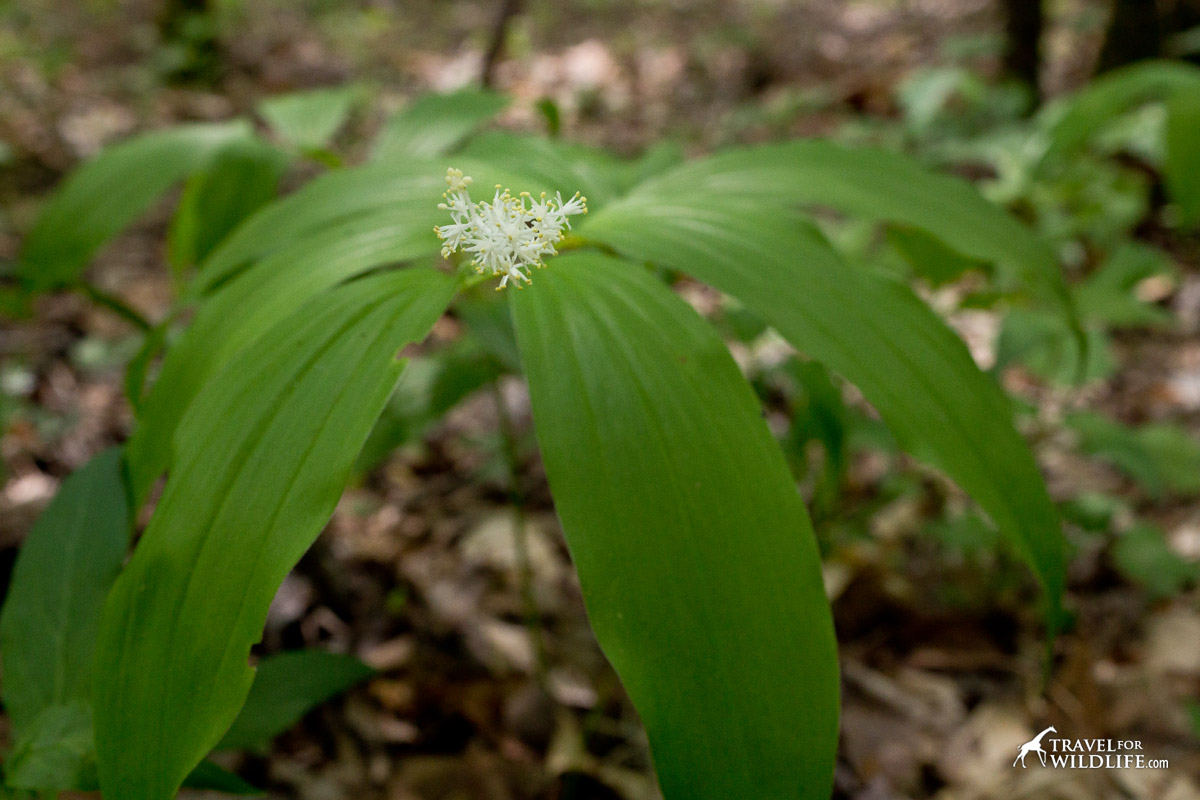
What distinguishes the False Solomon’s Seal from the Solomon’s Seal is its cluster of flowers at the end of the plant. When each flower is fertilized a ruby-red, translucent berry takes its place.
Also knows as Solomon’s Plume, Solomon’s Zigzag, and False Spikenhard.
Wild Geranium
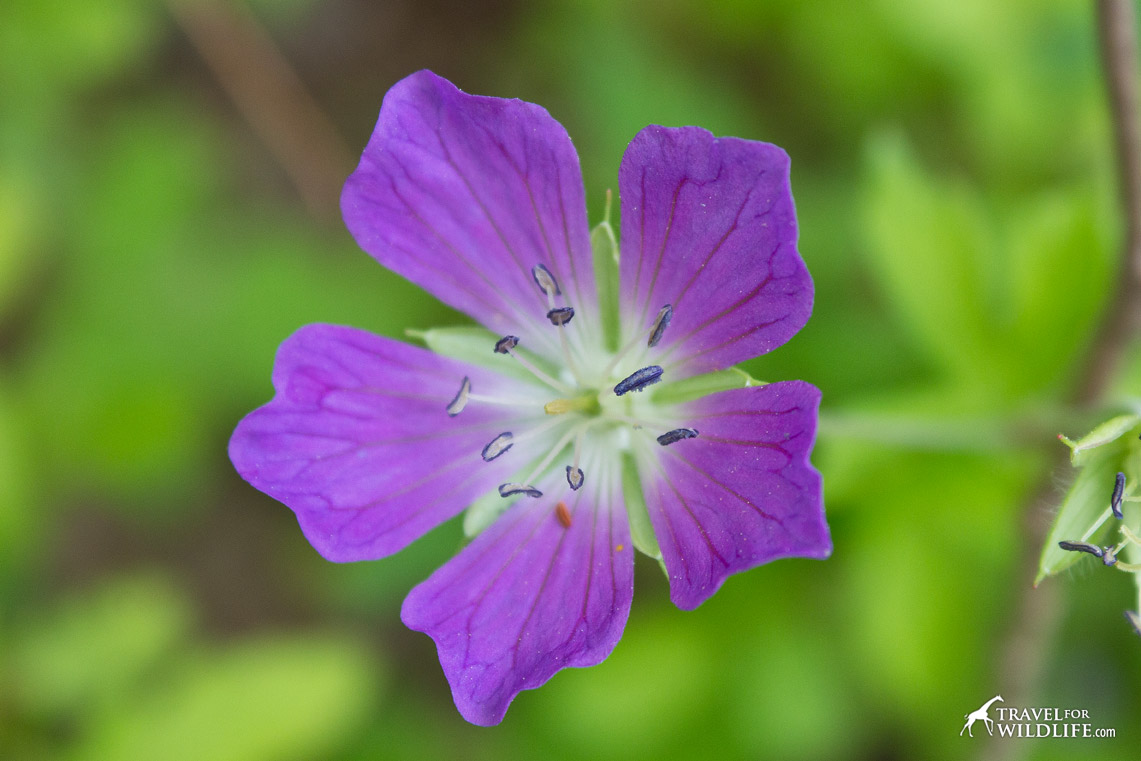
The fine lines that are visible on the petals of the flowers of the Wild Geranium lead to its reproductive part. Bees see in ultraviolet, and if we could also see the ultraiolet spectrum, we would see that these lines are indeed bold makers (like a landing strip) so the bees can find the nectar source easily.
Its stems are 12 to 18 inches tall.
Star Chickweed
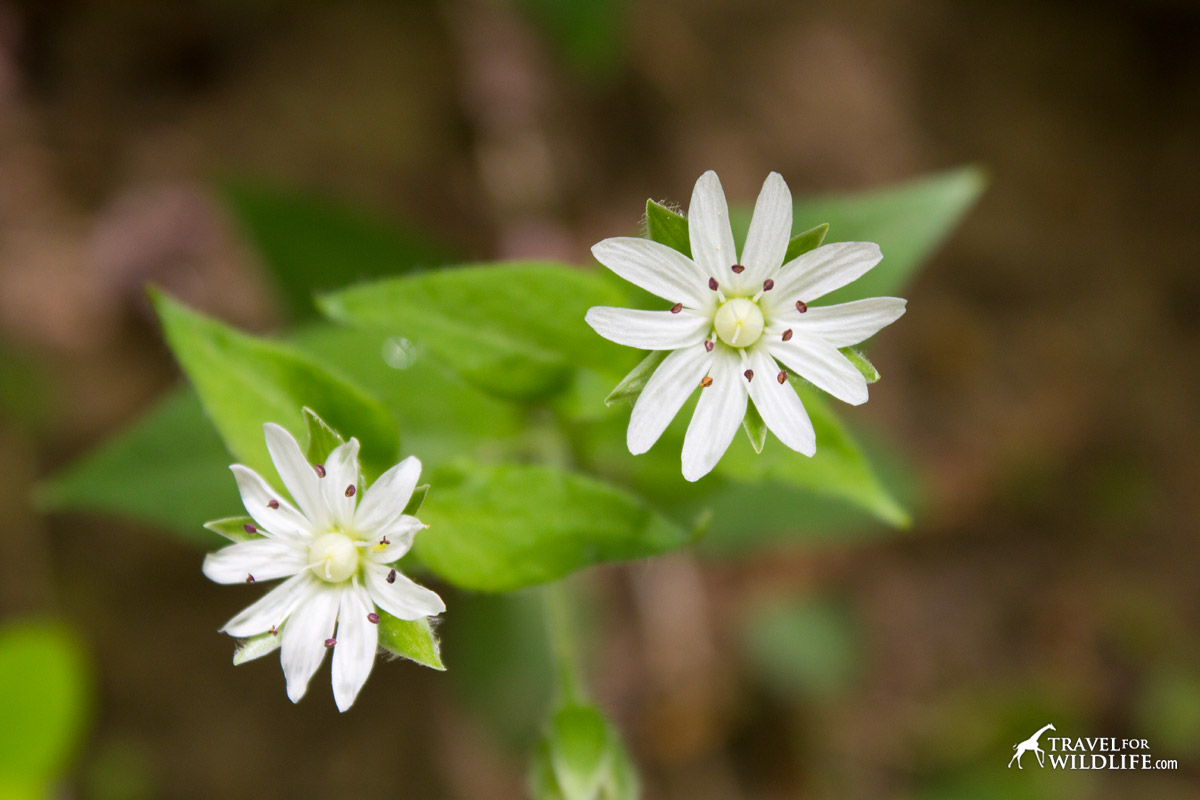
The little petals of this wildflowers are playing a trick on us. It might seem the Star Chickweed has ten petals, but in fact it only has five. Each petal is cut almost to its base, giving this false impression.
Unidentified Wildflower
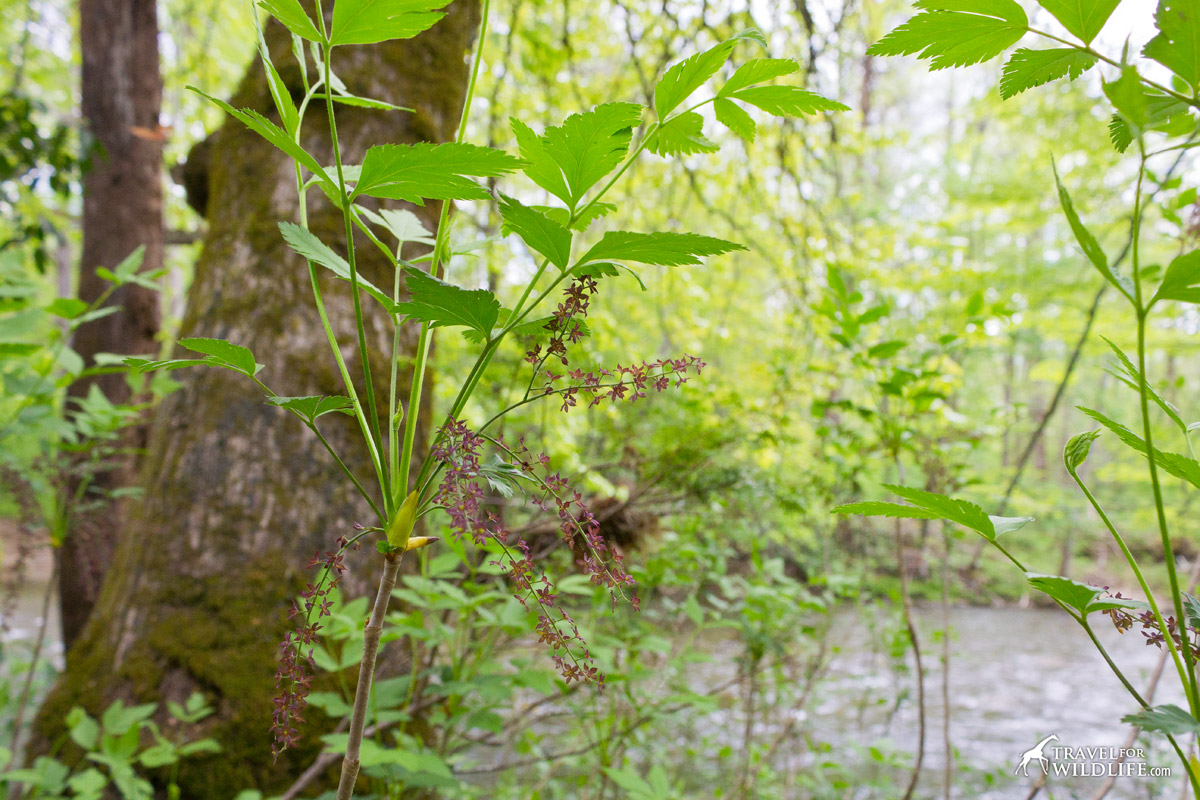
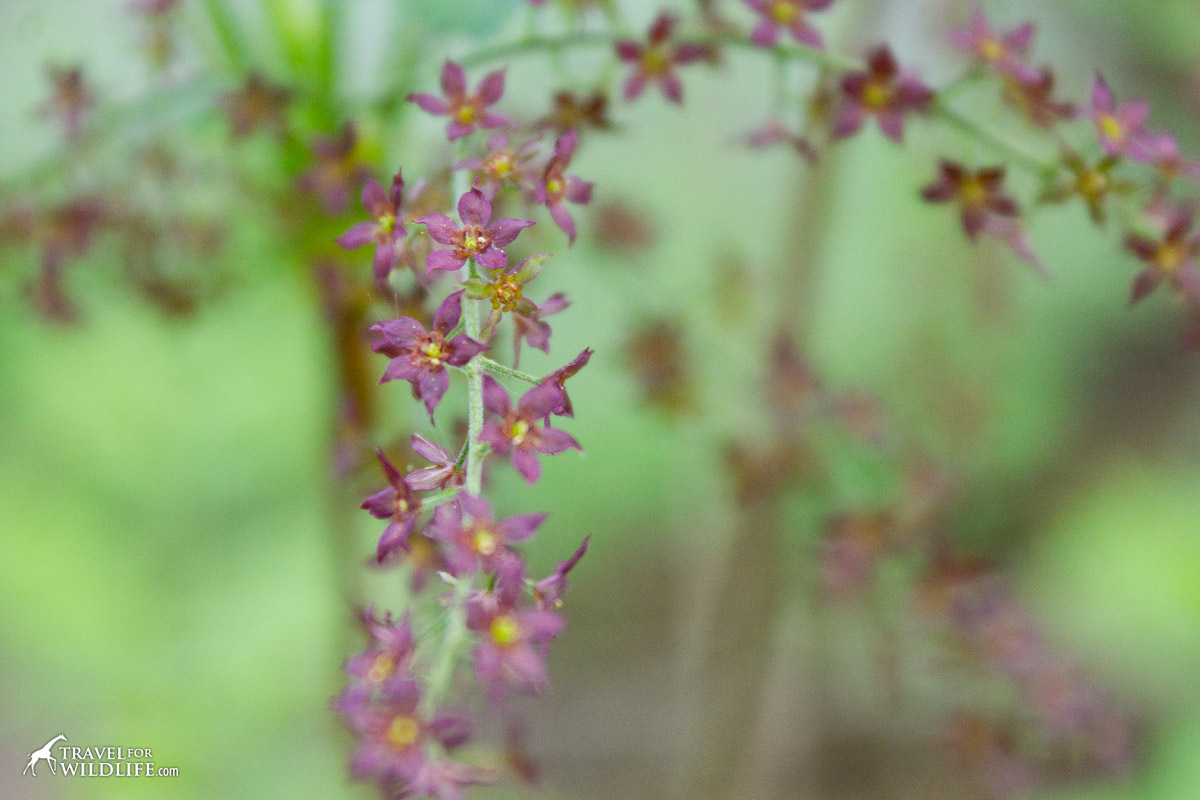
We have tried really hard to identify this amazing flower. We asked the park employees at the Oconaluftee Visitor Center, but even their “Wildflower guy” couldn’t tell us what it is.
If you know what it is, let us know in the comments below!
Thyme-leaved bluets
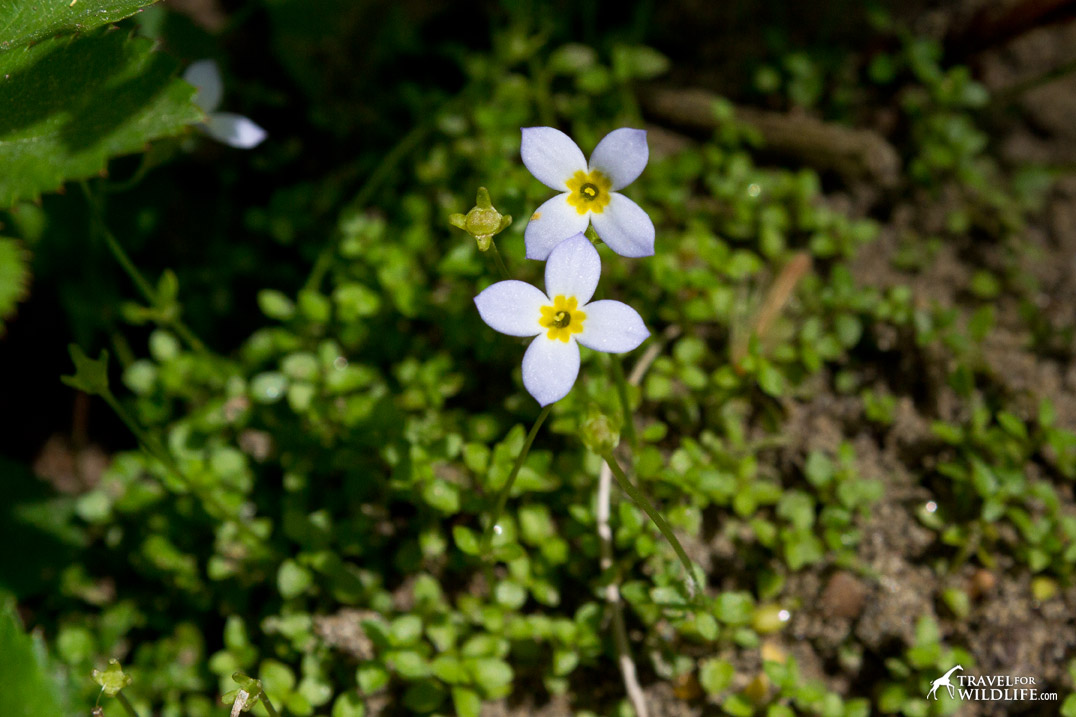
This tiny wildflower is only 1/3 inch across! It is a favorite with hoverflies, butterflies, and bees, and as the name implies, its leaves are very similar to those of the common herb thyme.
Wild Stonecrop
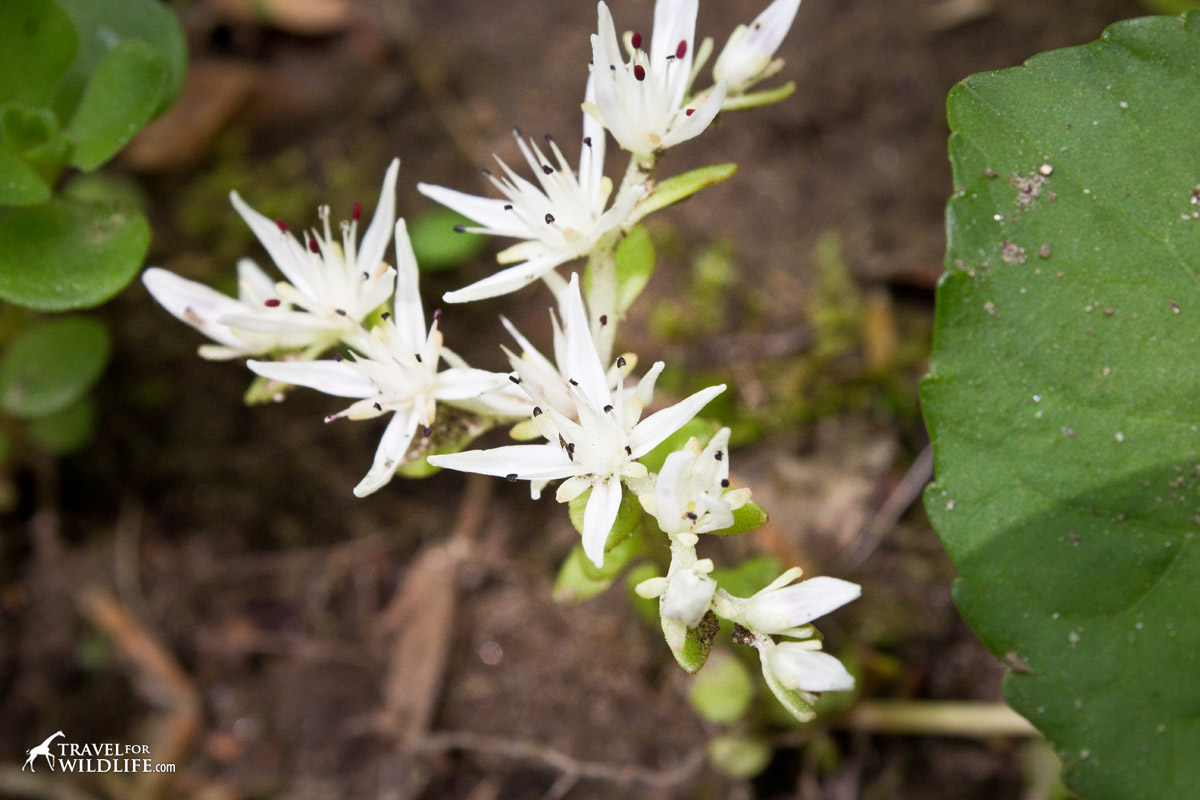
The small white flowers of the fleshy Wild Stonecrop are no more than 4-5 inches tall. It is easily identified due its arrangement of the stems in groups of three.
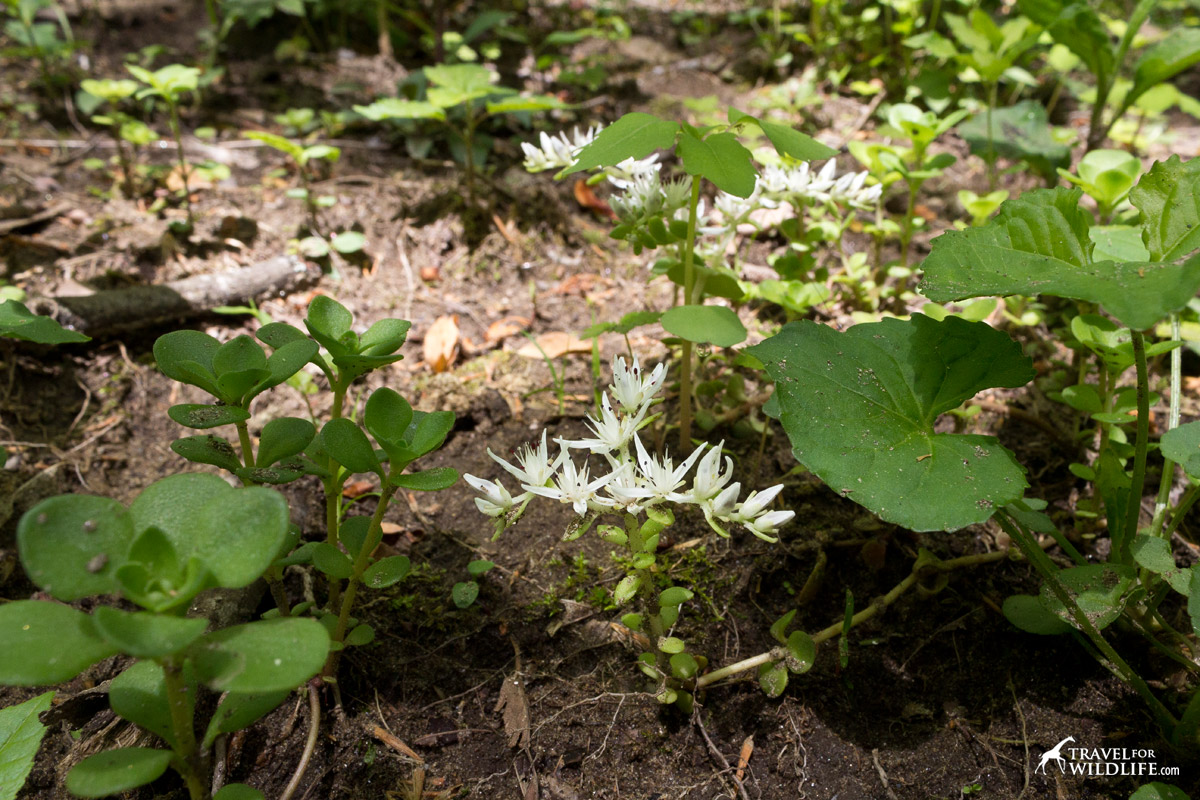
Wood-betony
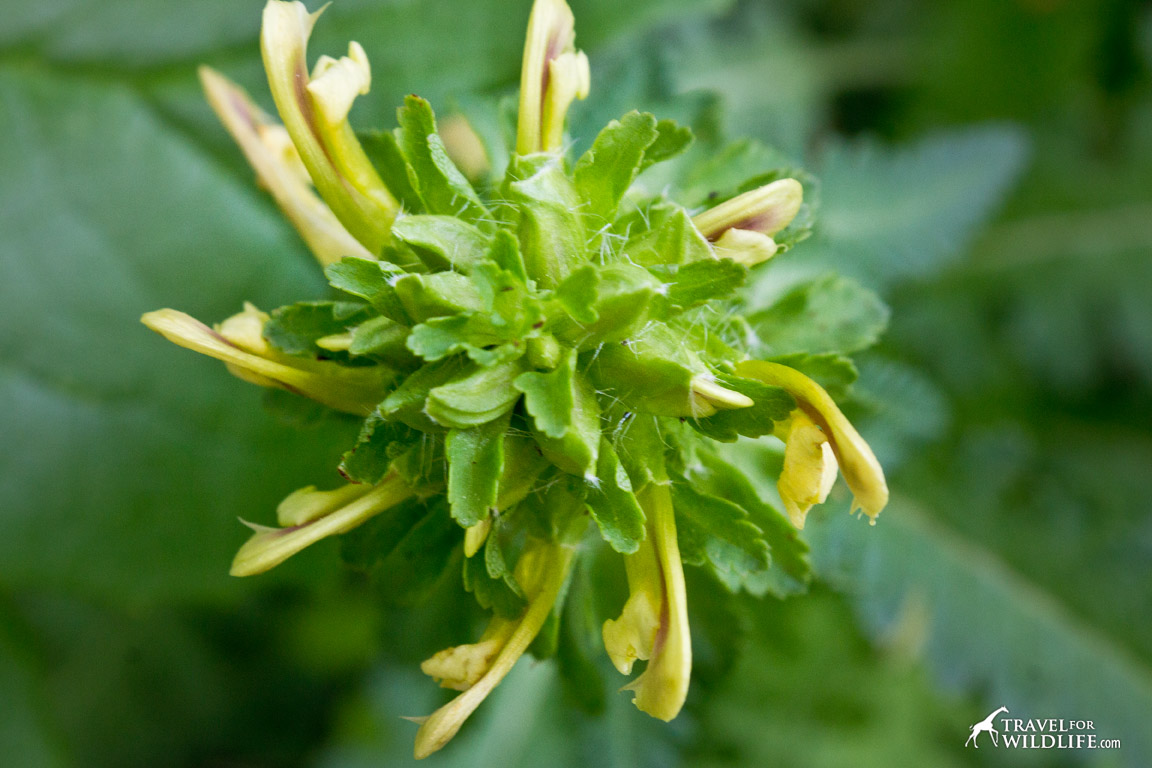
The leaves and the flowers of the Wood-betony are clustered together. Its flowers are a favorite of bees and the leaves are so finely cut that they resemble ferns.
Unidentified Yellow Wildflower
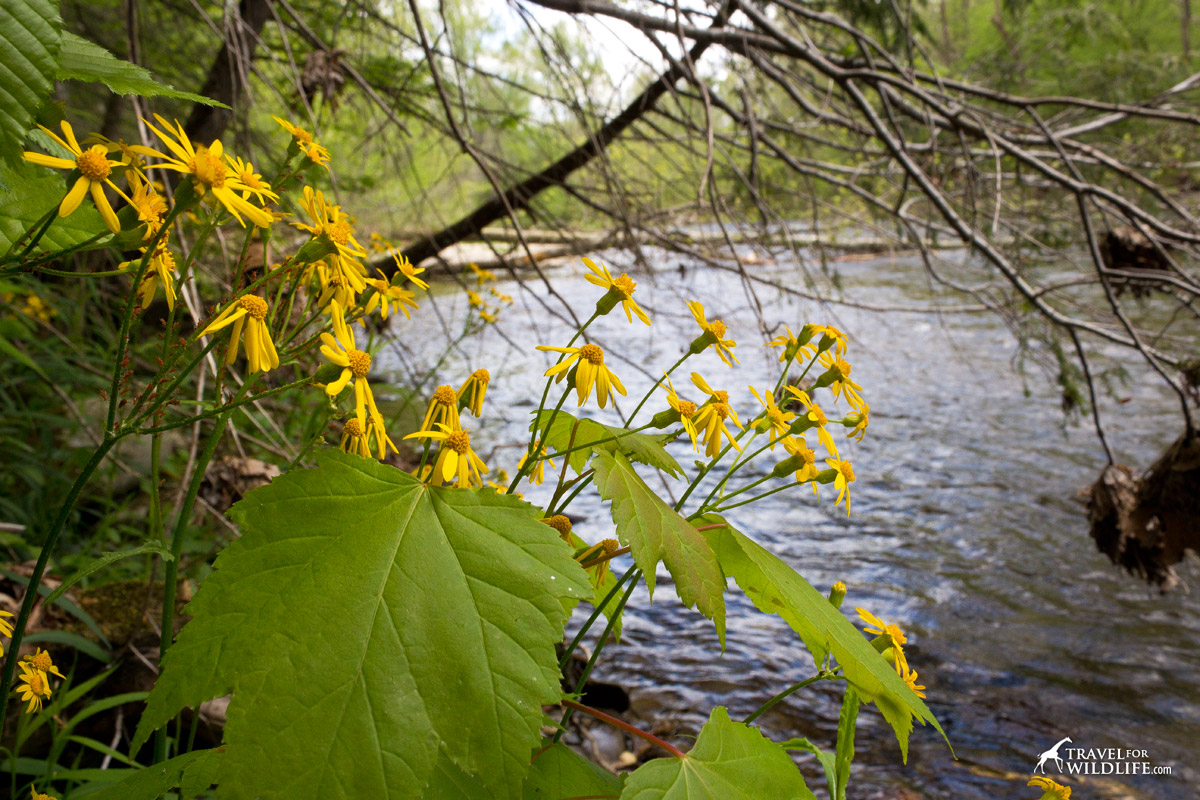
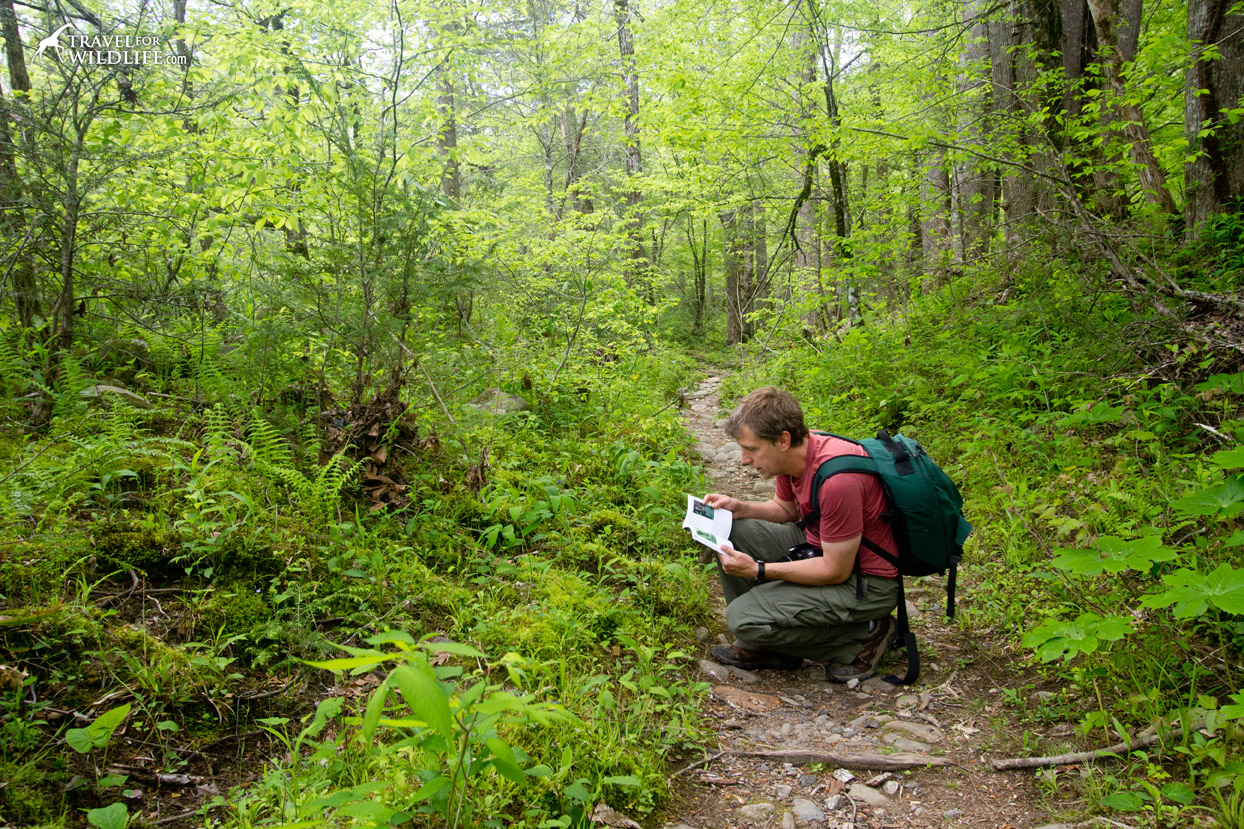
Cove Hardwood Nature Trail
This trail is located at the Chimneys Picnic Area near Chimney Tops. Although you don’t really need to leave the picnic area if you want to see wildflowers, we saw tons of trillium right around the parking area. Keep your eyes peeled! This trail is definitely not accessible by wheelchair, but the somewhat steep trail is totally worth the effort. What a beautiful spot!

Here are some of the wildflowers we saw during our wildflower pilgrimage at Cove Hardwood Nature Trail:
Bishop’s Cap
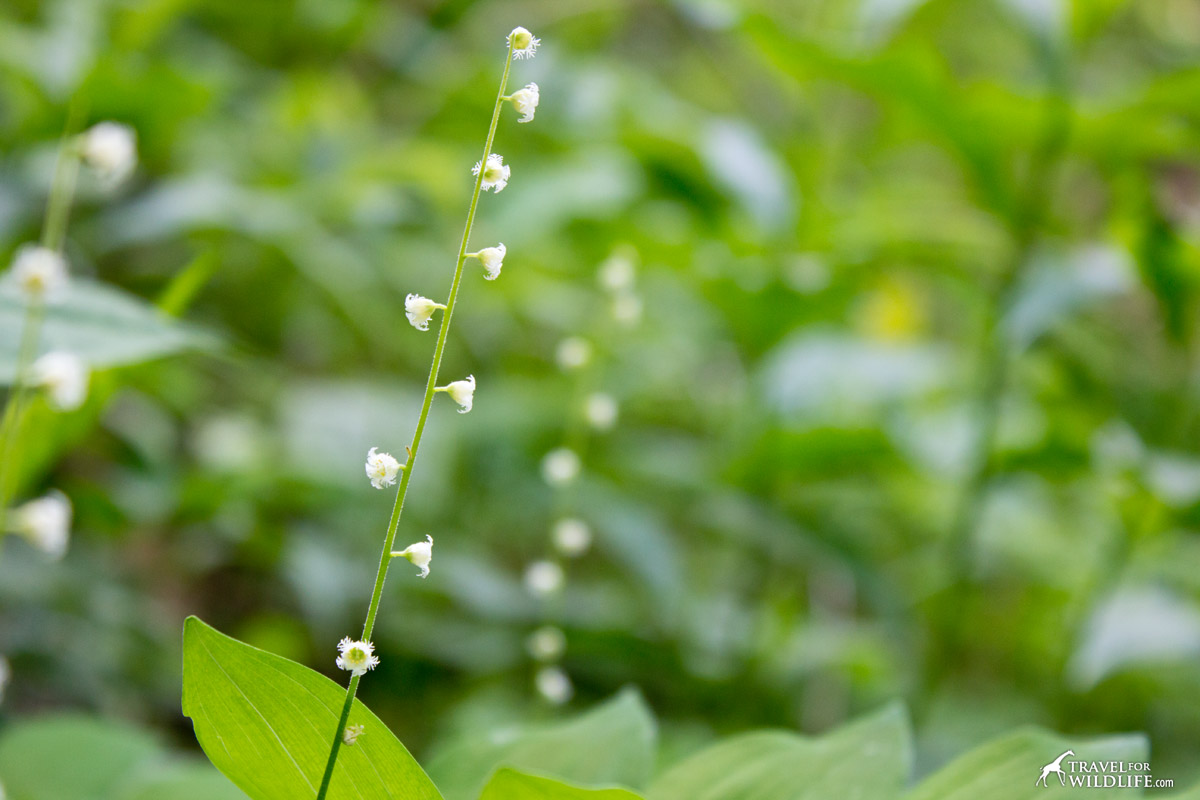
If you look at the Bishop’s Cap small white flowers with a hand lens their five petals resemble a snow flake!
The Bishop’s Cap is related to the Foamflower (pictured below).
Foamflower
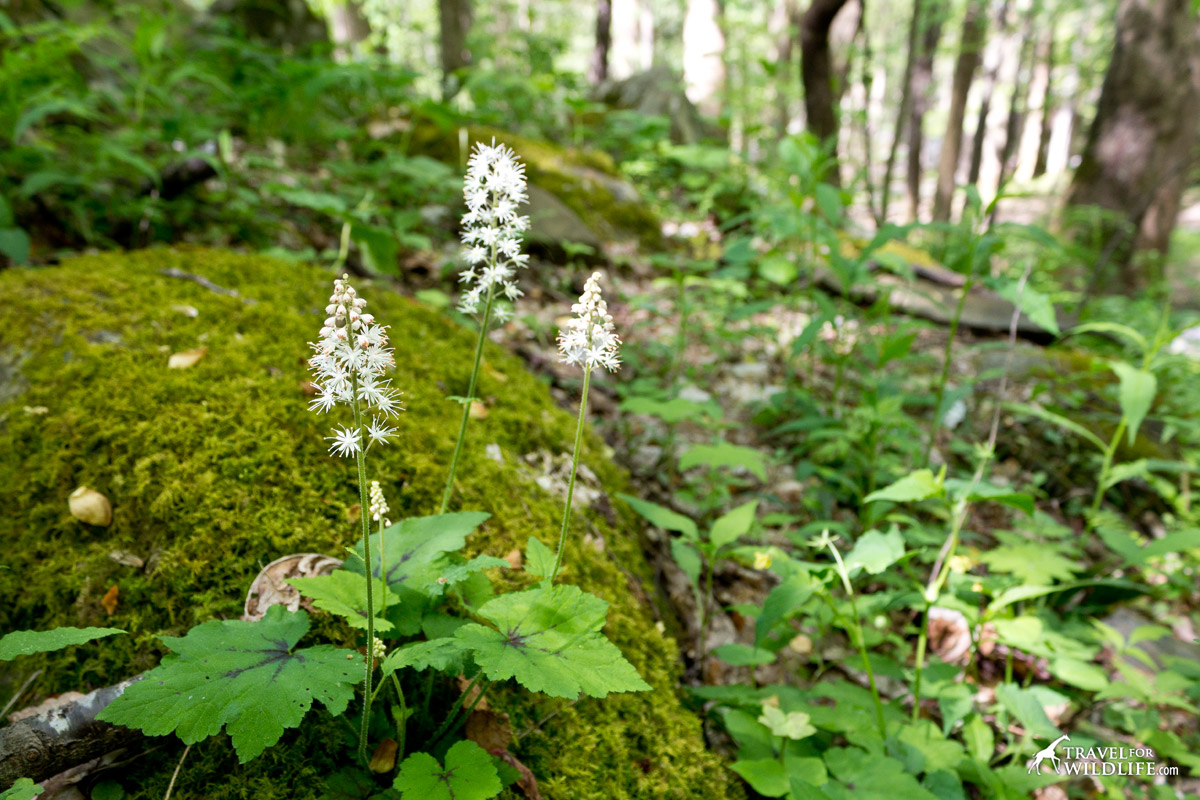
Foamflower can be found in wet and mossy places in mixed and deciduous forests across the Eastern United States. Its leaves resemble maple leaves and their flower stalks are 8-10″ tall covered with tiny white to light pink flowers.
Phlox
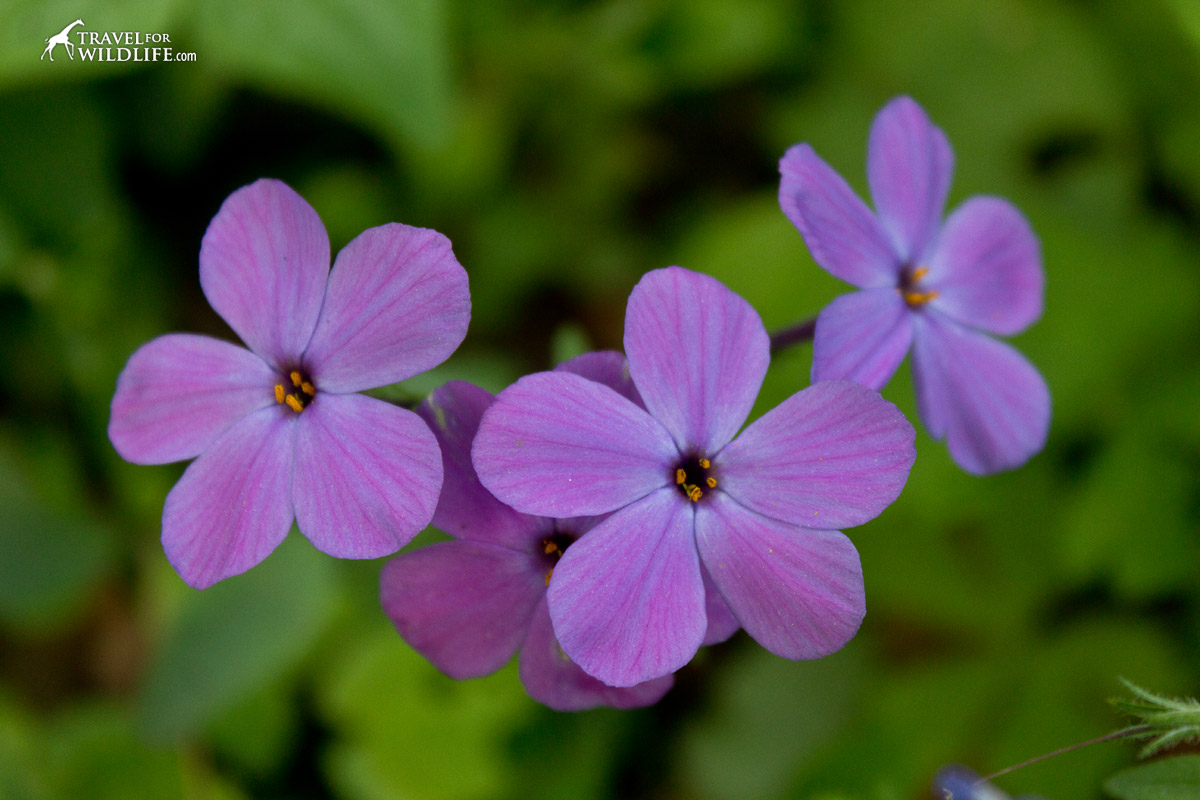
Cut-leaved Toothwort
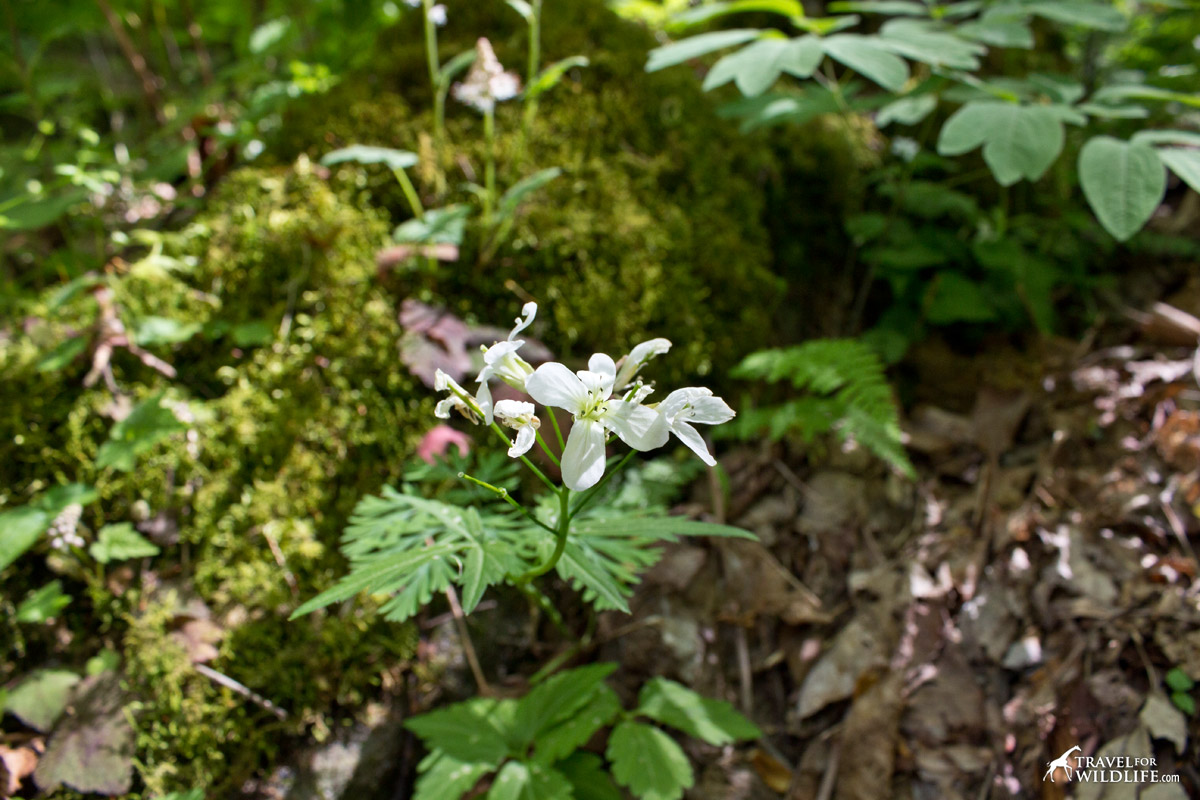
The Cut-leaved Toothwort is identifiable by a single stem with six tiny flowers, and a three-leaved stalk. After pollination, the flower turns into an inch-long pod and, once ready, it splits releasing tiny seeds to the wind.
Smooth Solomon’s Seal
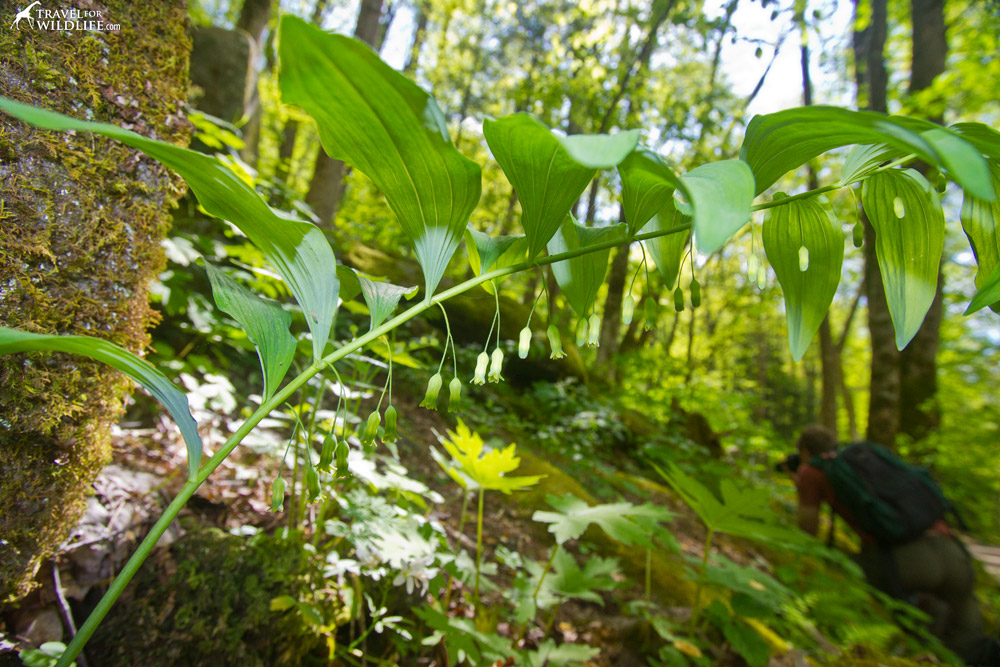
Definitely one of my favorites. At first glance you won’t see its little tubular flowers, but if you look closely, the Smooth Solomon’s Seal flowers hang hidden below the leaves. To see them you will need crouch at its level.
Smooth Yellow Violet
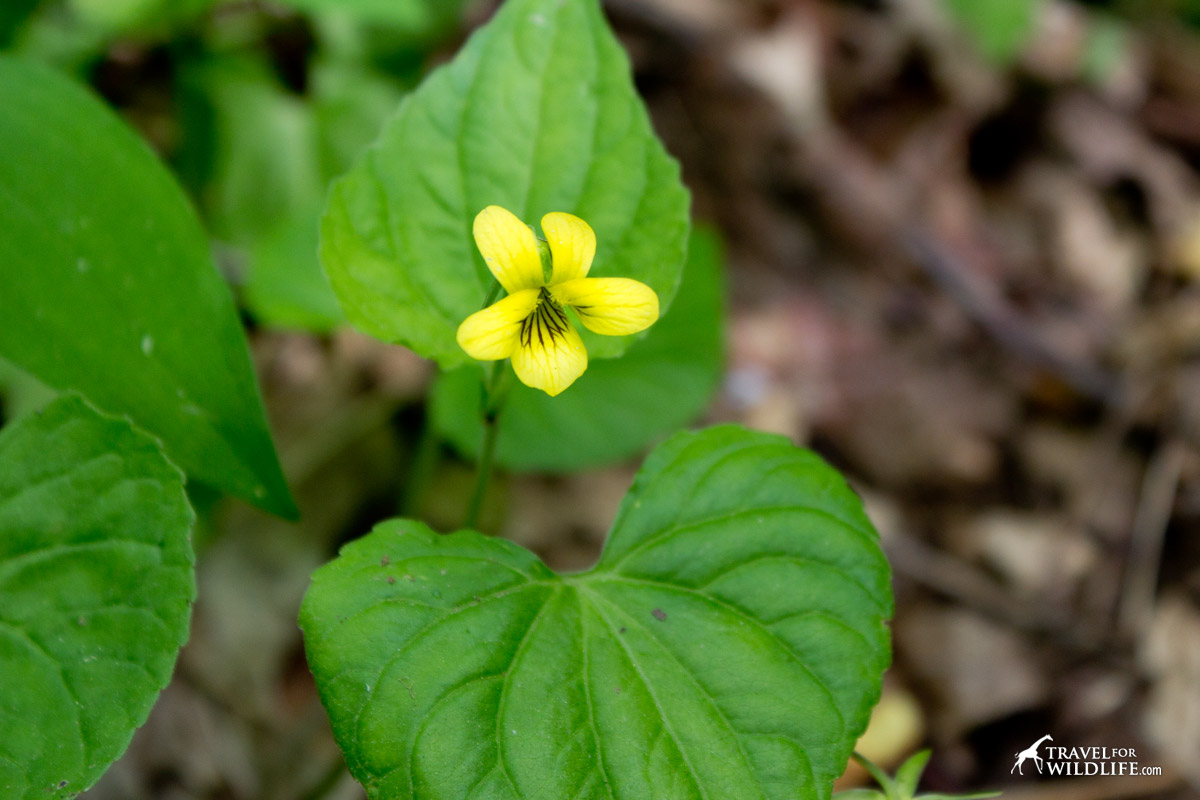
The Smooth Yellow Violet belongs to the “stemmed” violets, the ones that have leaves on their stem. This is how you can tell it apart from the Early Yellow Violet, as the later belongs to the “stemless” violets (no leaves are present on the flower stem).
May-Apple
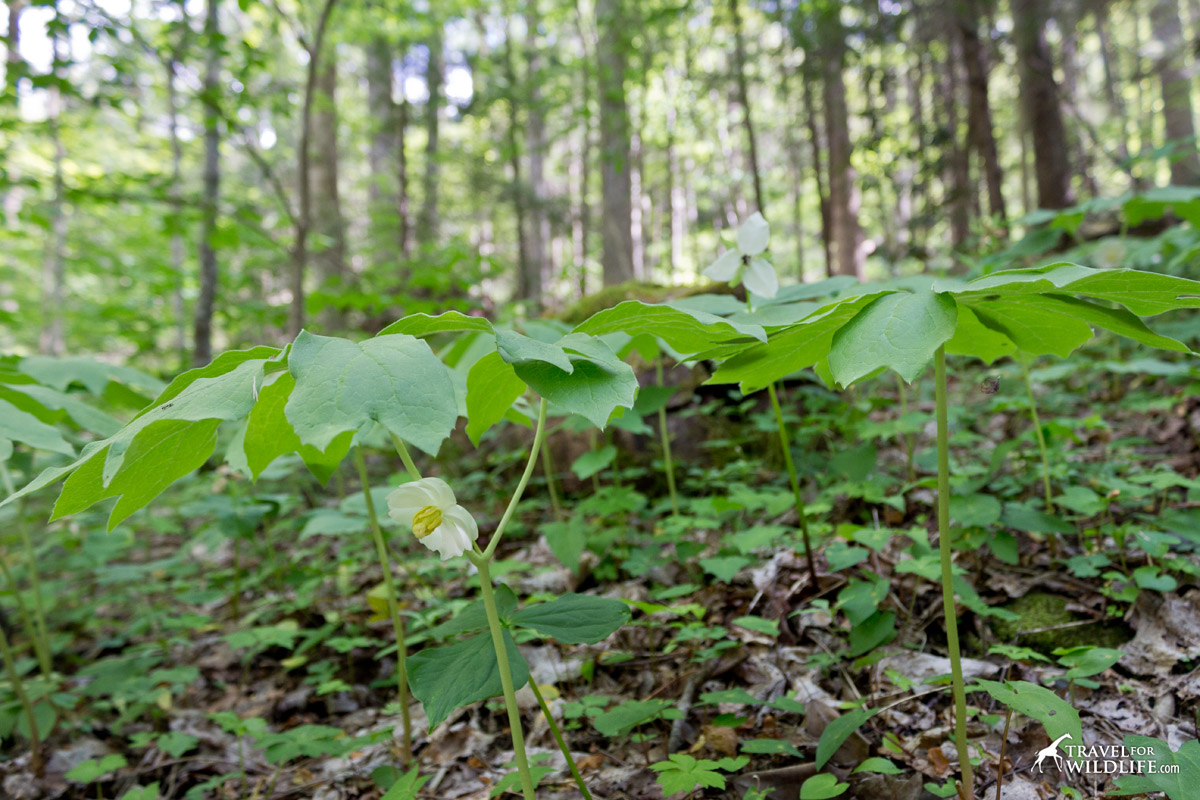
The May-Apple grows in groups. It has two umbrella shaped leaves and one single flower growing under the leaves, on a single stalk. This flower will turn into edible yellow berries! But don’t eat too many, it can be toxic when eaten in huge quantities. Maybe it’s best to leave them to the woodland critters.
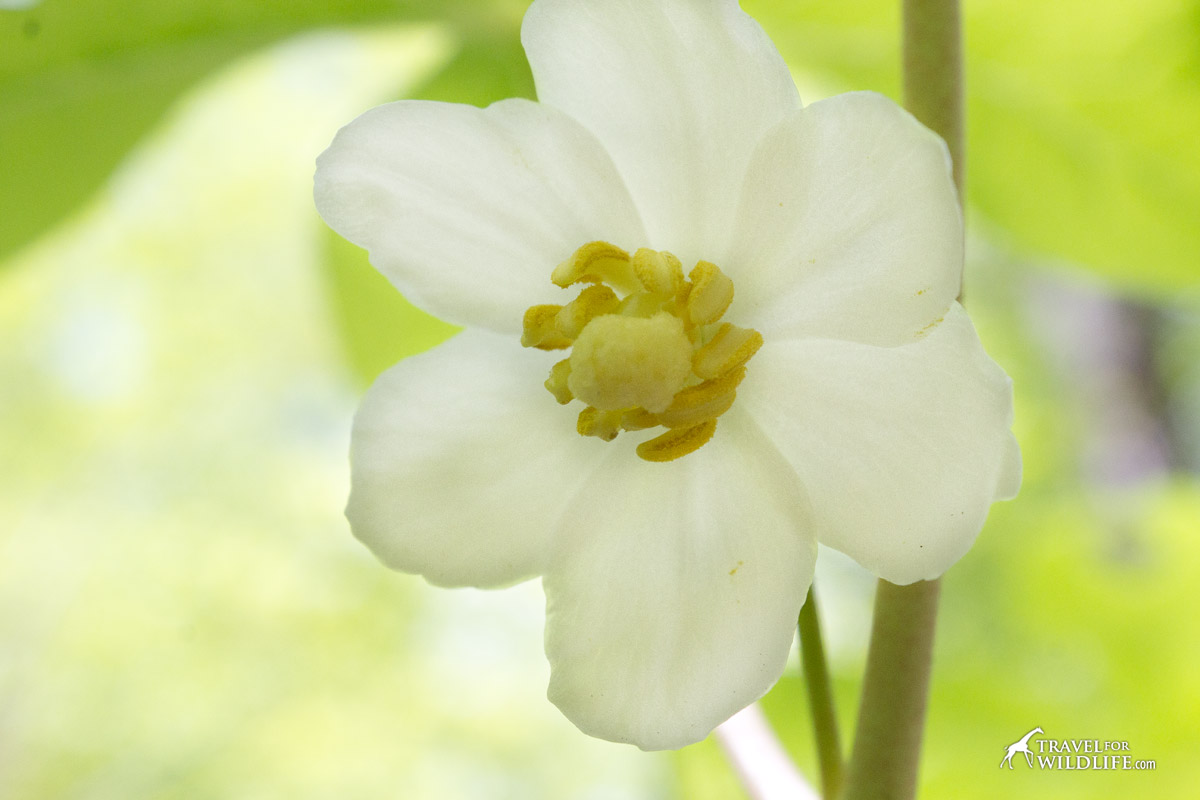
Meadow Parsnip
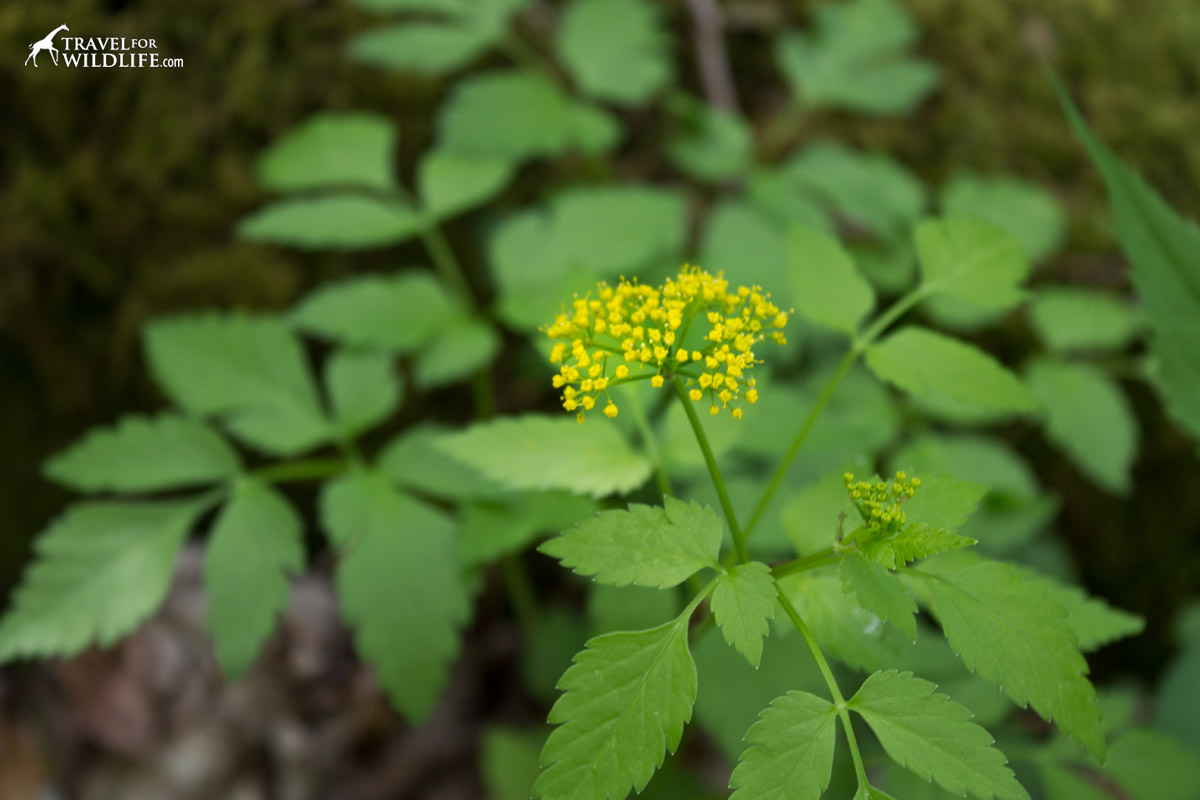
The Meadow Parsnip belongs to the parsley family. Its tiny flowers are located in a broad cluster.
Brook Lettuce
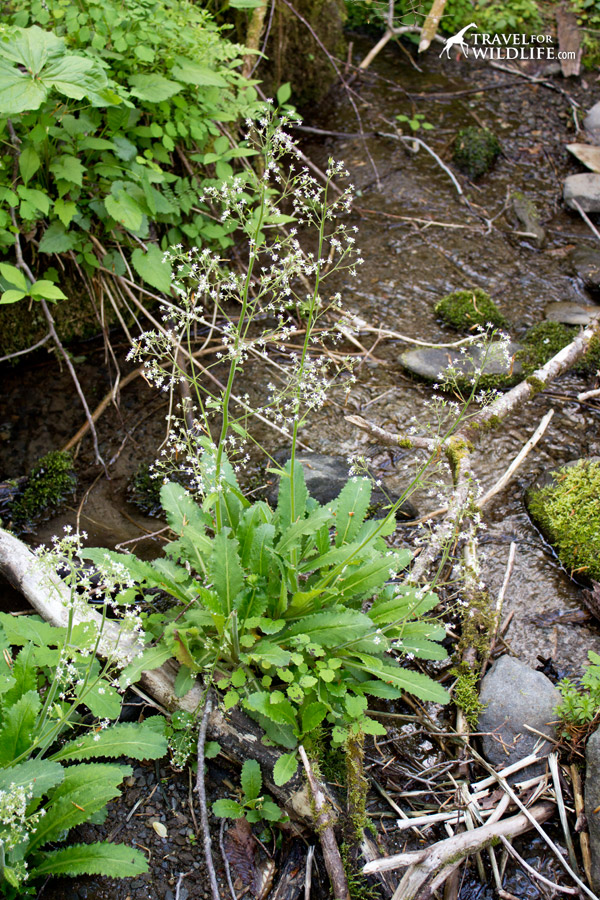
Yep, it is like a lettuce but with a bunch of stems full of tiny little white flowers. The Brook Lettuce is endemic to the Appalachians and is found on very shady and wet seepage slopes.
Rue-Anemone
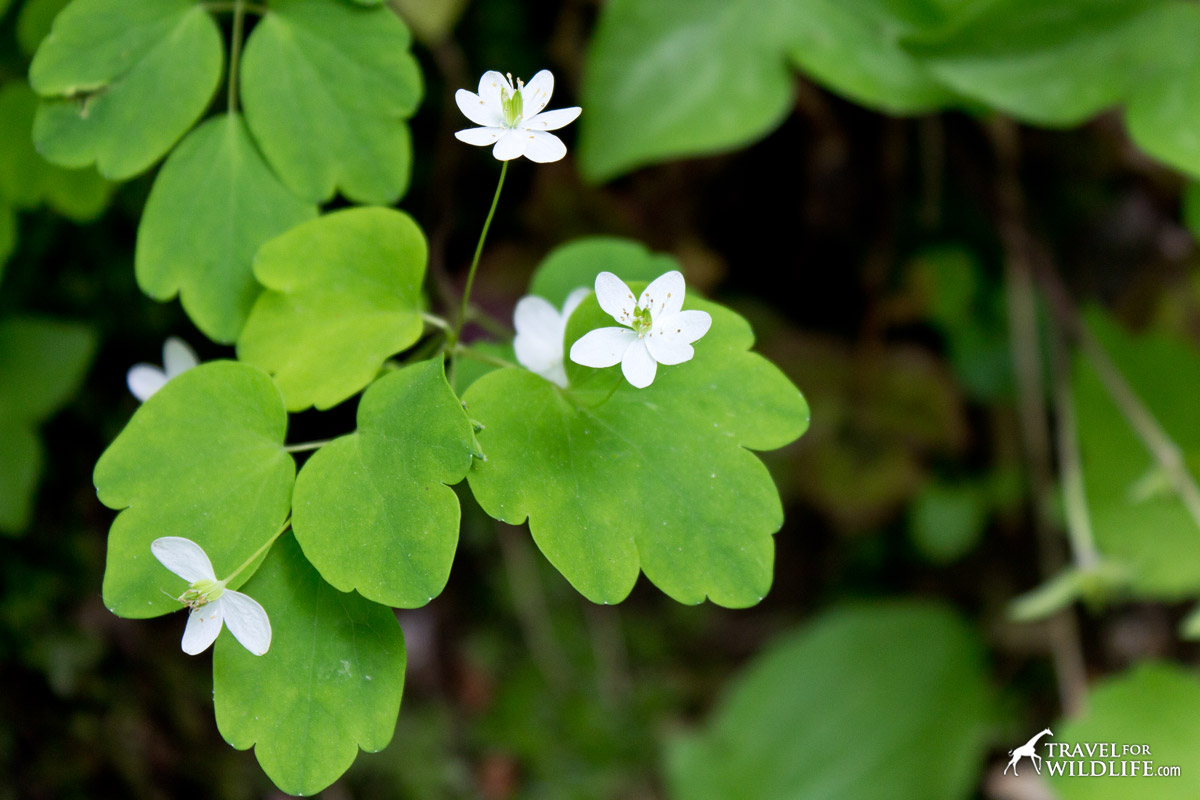
The Rue-Anemone is distinguishable from the Wood Anemone by the number of its flowers and the shape of its leaves. Rue-Anemone has 1-5 flowers whereas the Wood Anemone has only one. Their leaves are also slightly different.
Showy Orchis
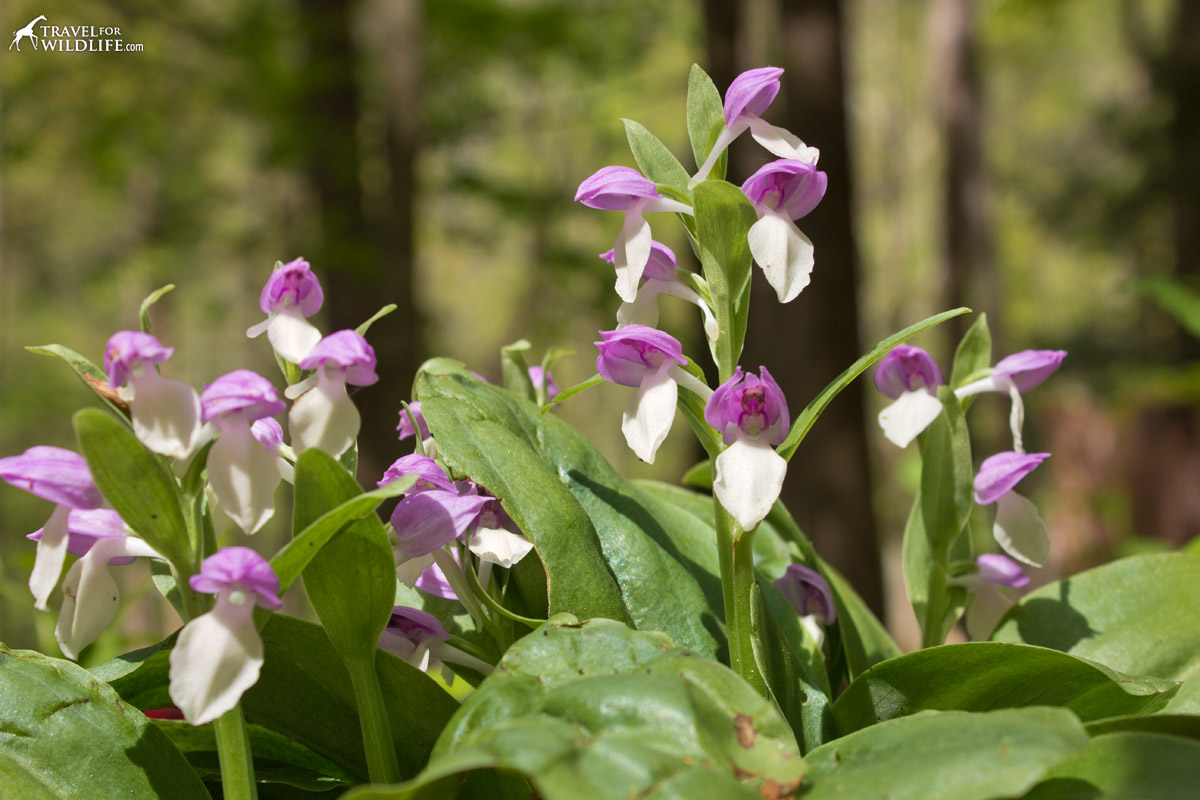
We saw the Showy Orchid grow in clumps. Its stalk bears from 2 to 12 flowers, which are comprised of a lilac hood and a white lip. This white lip is where the pollinators first stop before going in to get nectar.
Spring Beauty
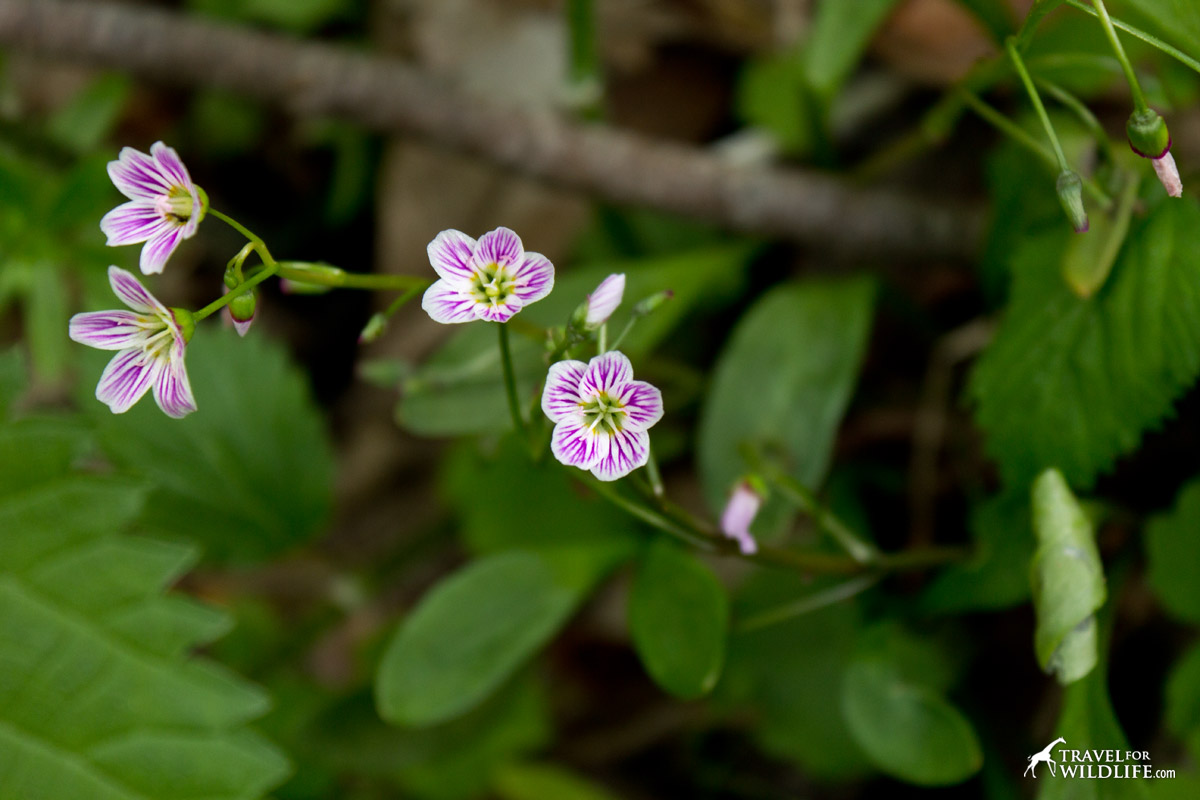
I am not 100% this is a Spring Beauty, only 99% sure.
The flowers of the Spring Beauty only open when the sun shines. Black bears like to eat its tubers! Bear food!
Squirrel Corn
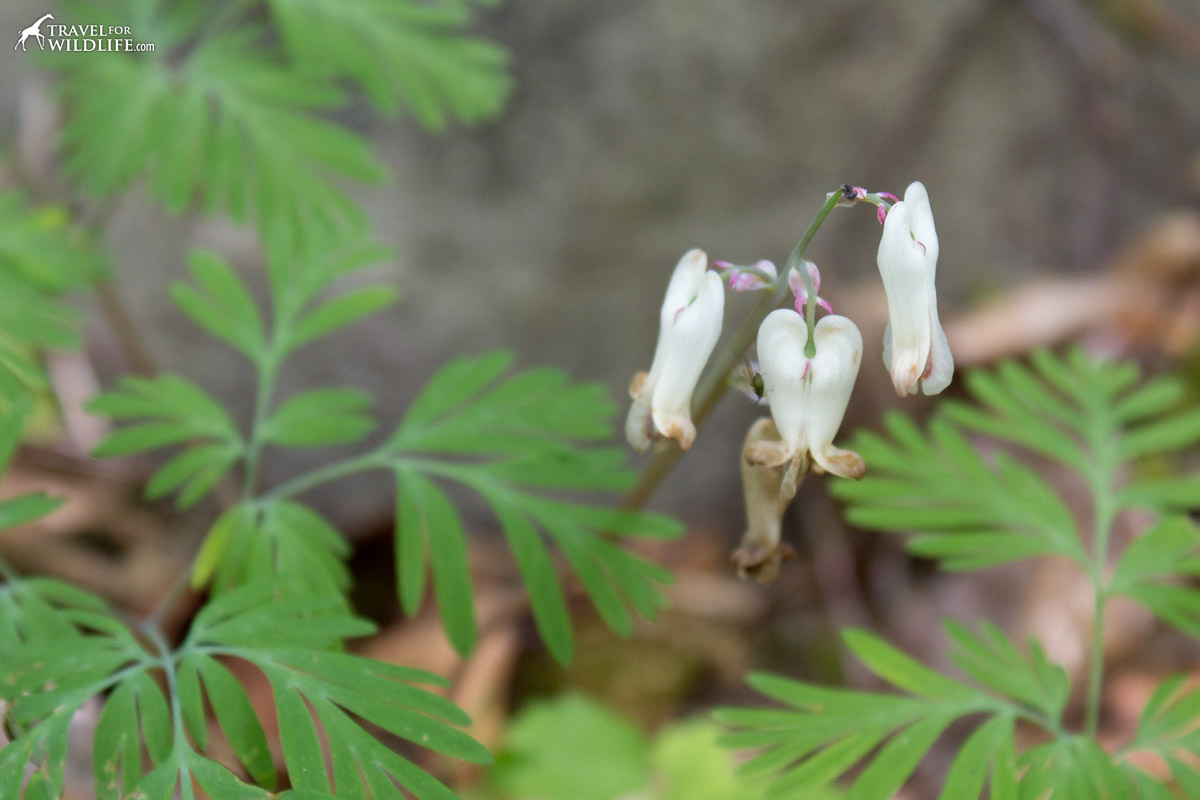
You will remember this one because of its silly name. But no, it didn’t get its name because of the flowers. It comes from the small yellow tubers that squirrels love to eat for a snack.
White Erect Trillium
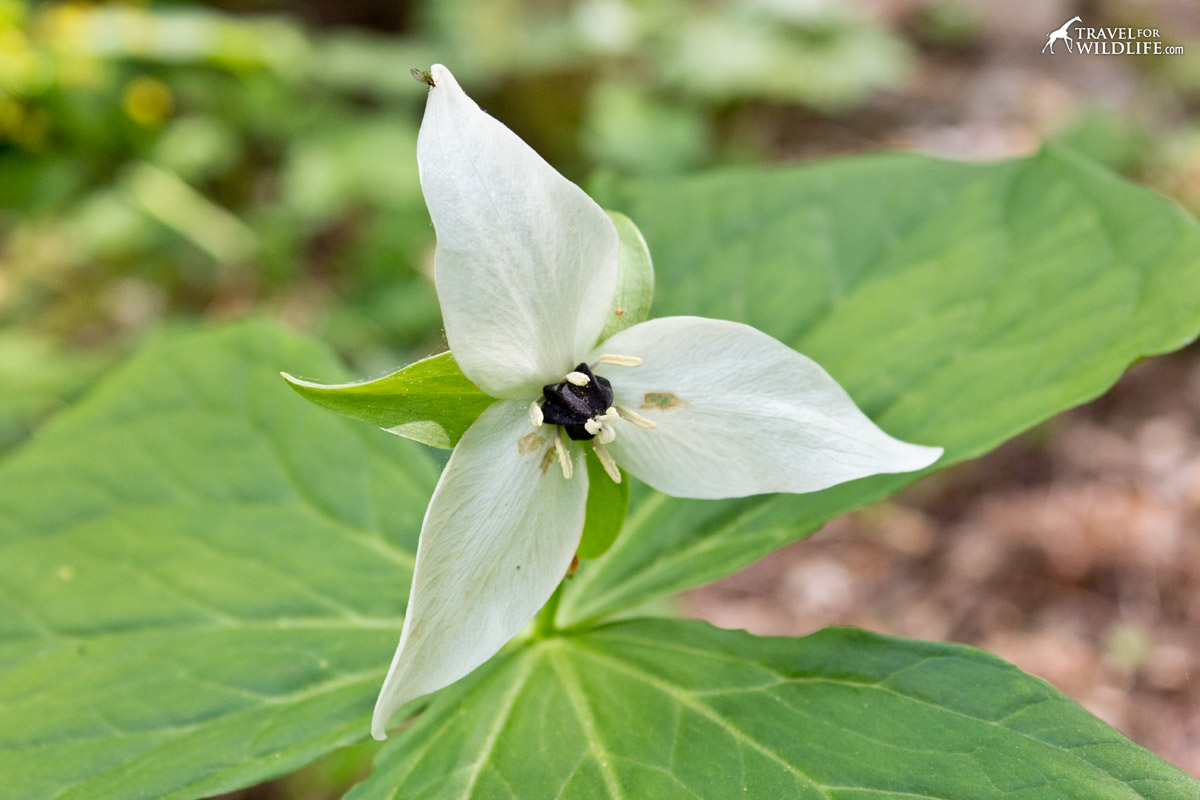
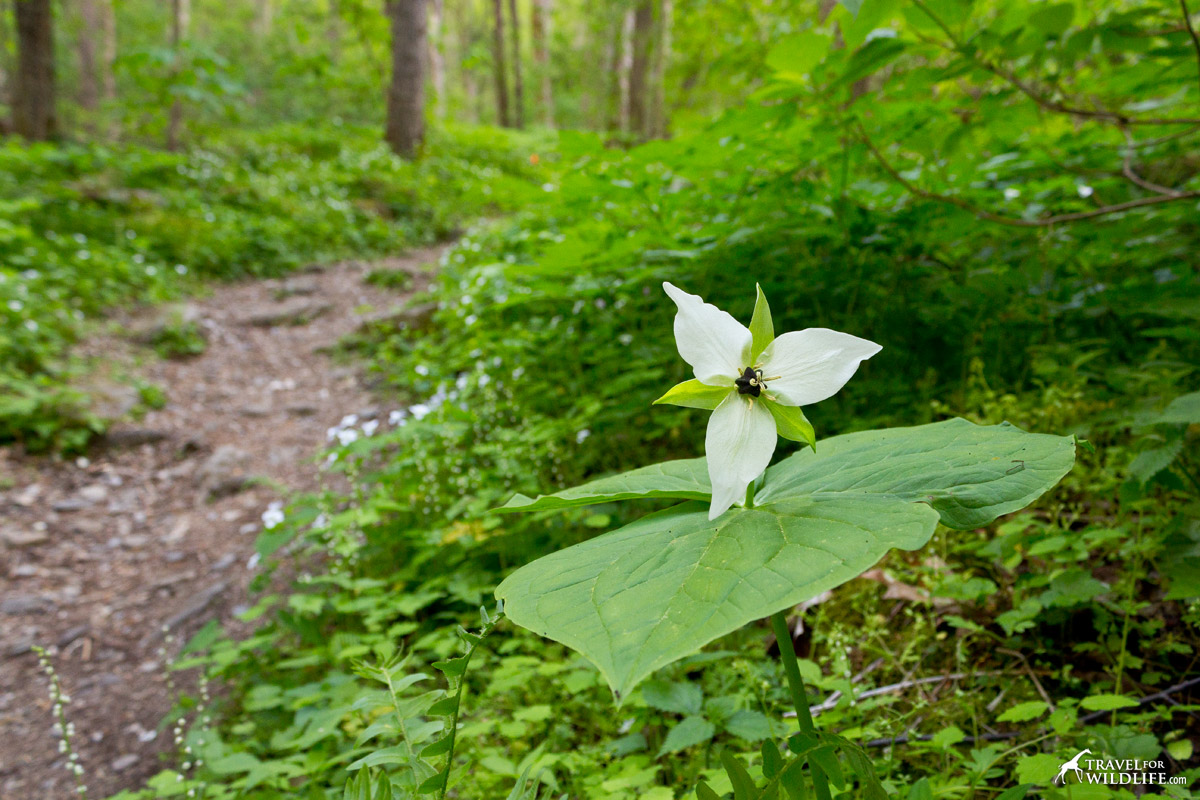
The three petals of the Sweet White Trillium spread out in a way that that the flowers seems flat. This trillium is found all along the Appalachians, but more abundant in the Smokies.
White Trillium
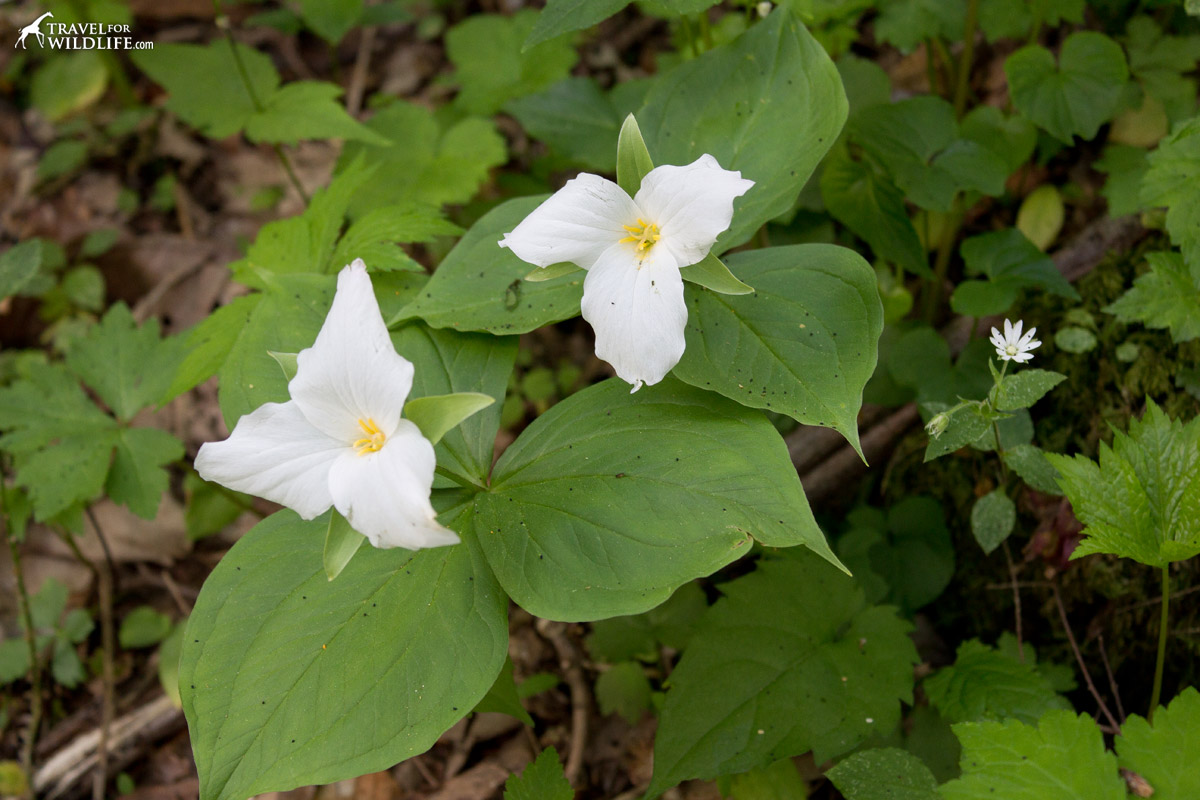
Here’s a pretty cool fact about the White Trillium. Its flower turns a pinkish color with age, which is a signal to pollinators to not bother visiting, as it has been already pollinated! I’ve also seen this flower referred as Large-flowered Trillium.
Yellow Trillium
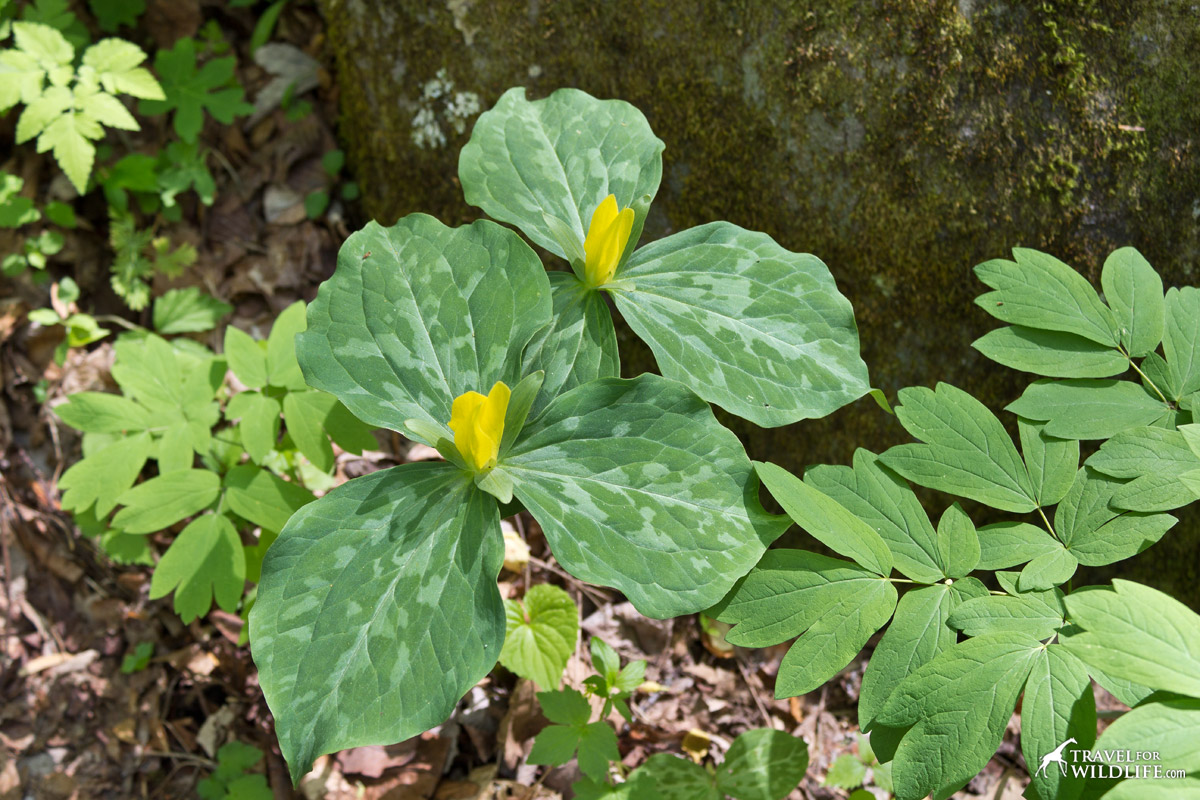
The Yellow Trillium is just stunning. From its showy flowers to its beautiful two-toned leaves this flowering plant is just amazing. Its petals are narrow and erect, so it looks as if the flower is closed for business. Yellow Trillium is pretty easy to find, just park the car on the Hardcove Trail parking area and look outside your window! They are all over! It is said they have a lemony smell.
We saw all these wildflowers (and more!) in just one day. I can’t imagine how many more we would’ve seen if we’ve had have time to go to other parts of the park. I look forward to seeing the wildflowers in another month. What will we find?
If you enjoyed this article, PIN IT!
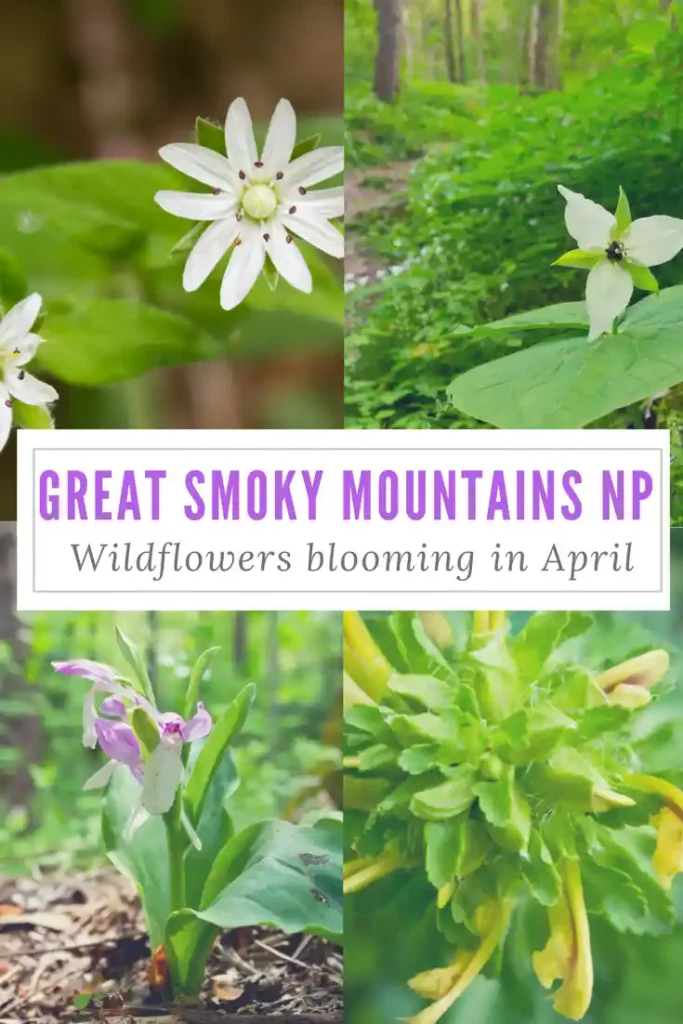

Cristina Garcia
Zoologist and wildlife photographer. She has worked in the field with jackals, wolves, cheetahs, & leopards. She serves on the Board of Directors of SEE Turtles, a non-profit sea turtle conservation organization.
Read her posts at Travel For Wildlife and see more of her work at Truly Wild, & Our Wild Yard.

Gyaneshwari Dave
Wednesday 16th of May 2018
The unidentified yellow ray flowers looks Golden Ragwort to me! :)
Loved this post, it was great to come across another wildflowers enthusiast.
You might enjoy my post too: https://pineconedream.com/2018/05/15/32-amazing-spring-wildflowers-i-spotted-at-smoky-mountains-before-an-overwhelming-epiphany/
Peggy Hansen
Monday 10th of April 2017
Xanthorhiza simplicissima is the unknown wildflower.
Laura
Sunday 22nd of May 2022
Yes, I was going to make the same surmise knowing only its common name: yellowroot! ^_^
cristina garcia
Monday 1st of May 2017
Thank you so much Peggy!